1. Depression-Era Glassware
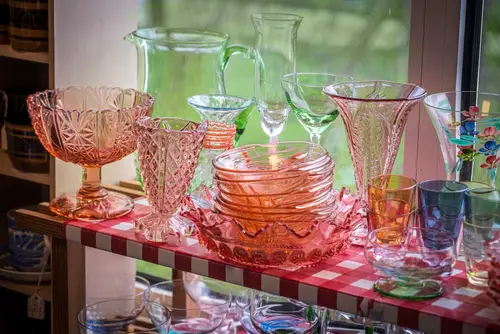
Depression glass was mass-produced in the U.S. during the 1920s and ’30s, which is why most Americans think of it as “cheap old glass.” In Europe, collectors love the bright colors and intricate patterns, often paying hundreds to thousands for complete sets. Pieces in pink, cobalt blue, or green with patterns like “Cherry Blossom” or “Miss America” are especially sought after. Even small items like salt shakers or creamers can fetch surprisingly high prices overseas.
The charm is partly nostalgia and partly rarity. While Americans see them as everyday kitchenware, Europeans appreciate the craftsmanship and history behind each piece. Certain manufacturers, like Anchor Hocking or Federal, are particularly collectible. It’s a classic case of something being undervalued locally because it’s too common to feel special.
2. Vintage Pyrex

Old Pyrex mixing bowls are often relegated to garage sales or thrift stores in the U.S., but Europeans see them as iconic Americana. Patterns like “Butterprint” or “Primary Colors” command attention and can sell for a lot more abroad. The heat-resistant glass and vibrant designs make them both functional and collectible. People in Europe enjoy using them and displaying them, not just storing them in cupboards.
Collectors will pay extra for sets in pristine condition. Even a single bowl with its original pattern intact can fetch hundreds of dollars. Americans often underestimate these because they were so widespread for decades. Meanwhile, in Europe, they’re seen as mid-century design treasures.
3. Cast Iron Skillets

Americans think of cast iron as old, heavy, and utilitarian, but Europeans have a growing appreciation for them. Vintage skillets from brands like Griswold or Wagner are considered collectible items overseas. They’re praised for craftsmanship, durability, and the natural nonstick surface that develops over years. The aesthetic of a perfectly seasoned pan has become a conversation piece in European kitchens.
Collectors look for embossed logos and smooth, even seasoning. Small chips or rust can drastically reduce value, which encourages buyers to hunt for well-maintained examples. Americans often overlook these because they are still in daily use and not “decorative.” Europeans, by contrast, treat them as a mix of art and function.
4. Mid-Century Modern Lamps
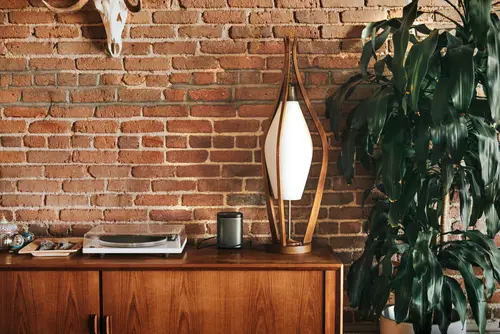
Mid-century modern furniture is well-known, but lamps are often ignored in the U.S. because people focus on chairs and tables. Europeans, however, prize lighting from the 1950s and ’60s, especially if it’s from designers like Laurel or Stilnovo. The combination of sleek design, unique materials, and warm lighting makes them highly collectible. Even small table lamps can dramatically elevate a room, which collectors notice instantly.
Condition and originality matter a lot. Shades, wiring, and metal finishes all impact value, and original components are rare. In America, many lamps are sold cheaply at thrift stores or repurposed. Across the pond, these same pieces are seen as high-design, making them worth thousands.
5. Early American Farm Tools
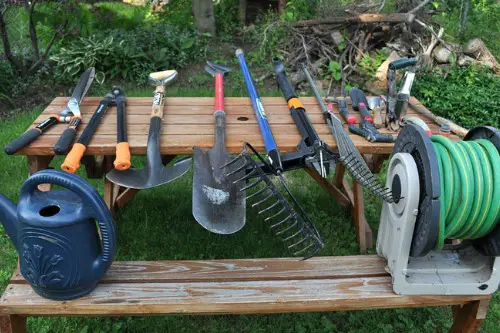
Old farm tools are often ignored as rusty junk in the U.S., but Europeans love them for rustic décor and history. Tools like hay hooks, butter churns, and hand-cranked drills are turned into charming kitchen or garden decorations. Collectors admire the patina and handmade quality, often paying more than $1,000 for rare examples. They’re seen as a piece of Americana and craftsmanship rolled into one.
The beauty is in the detail. Makers’ stamps and original wooden handles increase value. While Americans might see these as relics, Europeans appreciate the story they tell about daily life in early America. Their practical purpose gives way to aesthetic and historical appeal overseas.
6. Vintage Quilts
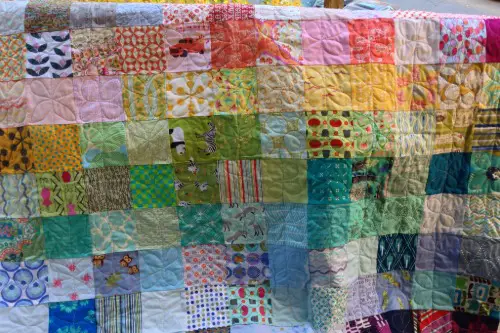
Quilts in the U.S. are often passed down as family heirlooms or used as bedding, but European collectors treat them as art. Patterns like Log Cabin, Double Wedding Ring, and Baltimore Album can sell for thousands. The stitching, fabric choices, and age all factor into their value. Hand-sewn examples are especially prized because they show meticulous craftsmanship.
Collectors look for condition and provenance. A quilt from a known region or maker is particularly desirable. Americans often underestimate these because quilts are everywhere, but context changes perception. In Europe, they’re rare artifacts of folk art and storytelling.
7. Early Advertising Signs
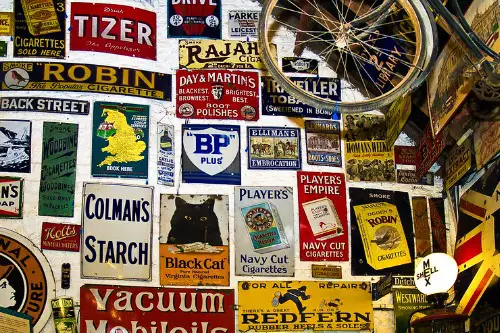
Tin and porcelain advertising signs from the 1920s–1950s often show up in flea markets and are ignored in the U.S. because they’re considered kitsch. Europeans, however, collect them obsessively, especially automotive or soda brands. The vibrant colors, typography, and nostalgia make them instantly recognizable. Condition is key—rusted but legible signs are especially coveted.
Sign collectors often pay premiums for rare graphics or short-lived campaigns. Authenticity matters, so reproductions are less desirable. In the U.S., these signs are often sold cheaply at garage sales. Overseas, they are treated like vintage posters or fine art pieces.
8. Depression-Era Jewelry
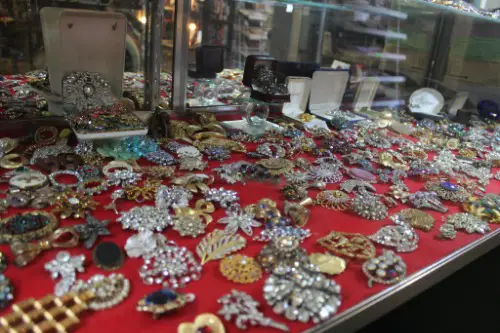
Costume jewelry from the 1920s and 1930s is often dismissed in the U.S. as plastic or cheap. European collectors, though, see these pieces as miniature works of art. Brands like Trifari, Coro, and Schreiner are especially collectible. They prize unusual designs, rhinestone arrangements, and enamel work that Americans often overlook.
Some pieces fetch hundreds or even thousands of dollars. Vintage jewelry enthusiasts value both condition and originality, looking for clasps, signatures, and intact stones. Americans tend to focus on fine jewelry, while Europeans also appreciate quality costume pieces. The unique aesthetic gives them cultural and historical value abroad.
9. Antique Silverware
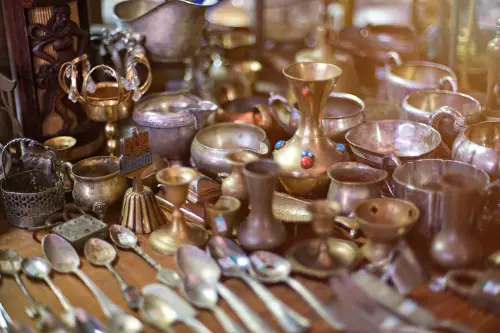
Old silver flatware sets are often sold cheaply or left in attics in the U.S., but Europeans prize them highly. Patterns from manufacturers like Gorham, Wallace, and Towle are in demand. Silver content, maker marks, and intricate designs all play a role in value. Even a few matching pieces can be collectible if they are well-preserved.
The appeal is partly utilitarian, partly decorative. Europeans often use antique silver for formal dining or display. Americans, by contrast, may see tarnished sets as outdated or impractical. Over there, they’re cherished as a combination of heritage and elegance.
10. Vintage Tin Toys

Tin toys from the early 20th century are often overlooked in the U.S. because they’re considered children’s playthings. In Europe, collectors pay high prices for wind-up cars, trains, and robots. The mechanical craftsmanship and colorful lithography make them appealing as both toys and decorative objects. Condition, originality, and rarity can drive prices into the thousands.
Collectors especially seek pieces with intact paint and working mechanisms. Marks from manufacturers like Märklin, Bing, or Lehmann add value. Americans often dispose of them once broken or worn. Europeans view them as historical artifacts representing a bygone era of design.
11. Vintage Coca-Cola Memorabilia
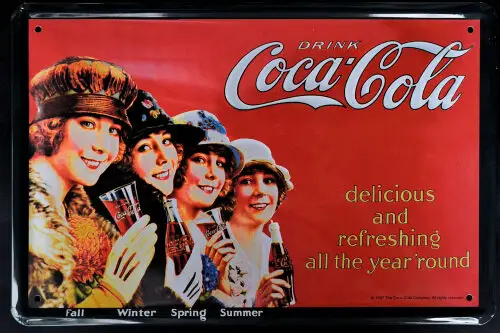
Americans see Coke items as ubiquitous, but European collectors often view them as rare Americana. Old bottles, signs, and vending machines are in high demand overseas. The appeal is in the nostalgic branding and the Americana factor. Pieces from the 1930s–1950s with logos in excellent condition are particularly valuable.
Even small items, like bottle openers or tins, are collectible. European buyers pay attention to originality and limited editions. In the U.S., people toss these items into storage or garage sales. Abroad, they’re seen as rare pieces of marketing history.
12. Old Postcards
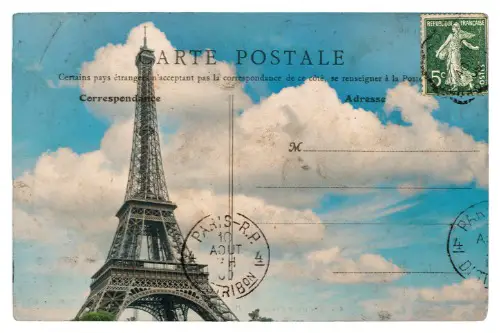
Vintage postcards from early 20th-century America often end up in boxes in attics, ignored by locals. Europeans, however, see them as windows into history, paying for views of cities, landmarks, and everyday life. Postmarks, handwriting, and imagery all add to the story. Cards featuring famous events or locations can command surprisingly high prices.
The small details make a big difference. European collectors love cards with original stamps or messages. In the U.S., they’re often tossed as junk mail remnants. Overseas, they’re treasured historical snapshots.
13. American Folk Art
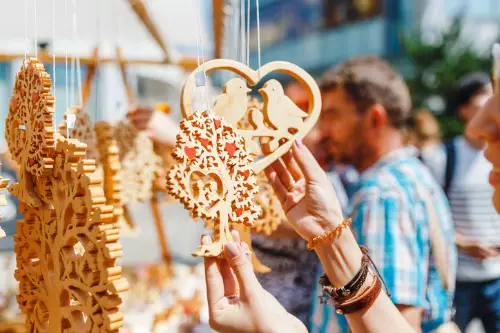
Paintings, carved figures, and decorative objects are sometimes dismissed in the U.S. as primitive or “unsophisticated.” Europeans, however, admire their craftsmanship and unique aesthetic. Early 19th-century samplers, decoys, and painted signs can sell for thousands. The charm comes from their authenticity and the glimpse they provide into early American life.
Provenance matters a lot. Items with known makers or documented origins are particularly valuable. In the U.S., folk art is often undervalued compared to European or modern art. Abroad, it’s seen as a distinct and collectible genre.
14. Vintage Jewelry Boxes
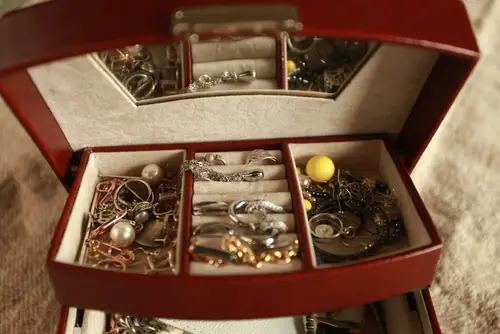
Wooden and metal jewelry boxes from the early 20th century are often ignored in the U.S. because they’re considered decorative but not valuable. In Europe, though, collectors love intricate inlays, painted designs, and craftsmanship. Art Deco and Victorian boxes are especially prized. Even small trinket boxes can be highly collectible if they’re original and well-preserved.
The attention is on detail and condition. European buyers value unique materials like tortoiseshell, mother-of-pearl, and hand-painted finishes. Americans may overlook these as everyday objects. Europeans treat them as miniature works of art.
15. Early American Clocks
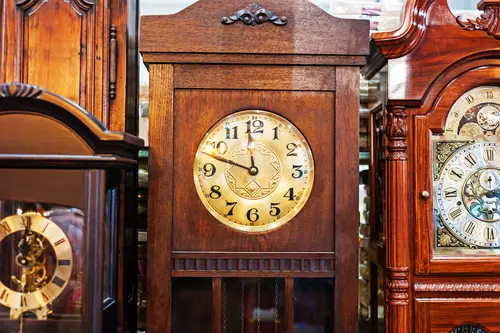
Old wall and mantel clocks are often considered outdated in the U.S. and end up in basements or thrift stores. In Europe, collectors appreciate their mechanics, design, and historical value. Brands like Seth Thomas or Ansonia are especially sought after. Even small, ornate timepieces can fetch high prices if they’re in working order.
Condition, originality, and decorative appeal all affect value. Europeans prize clocks with detailed carvings or unique faces. Americans often see them as functional but old-fashioned. Across the ocean, they’re collectible statements of craftsmanship.
16. Vintage License Plates
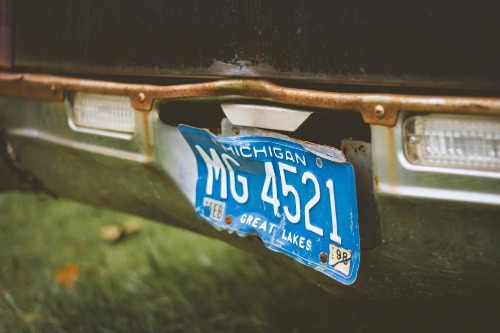
Old American license plates are often thrown in the trash or sold cheaply in the U.S. Europeans, though, see them as iconic Americana. Plates from the 1920s–1950s, especially rare state issues, are highly collectible. Rusted but readable plates add charm, while mint-condition examples can sell for thousands. They’re often used as décor, either framed or mounted on walls.
Collectors look for rarity and historical context. Special editions or short-run designs increase value significantly. Americans often overlook them as just car tags. In Europe, they’re viewed as pieces of American cultural history and design.
This post 16 Antiques Americans Ignore That Europeans Pay Thousands For was first published on American Charm.


